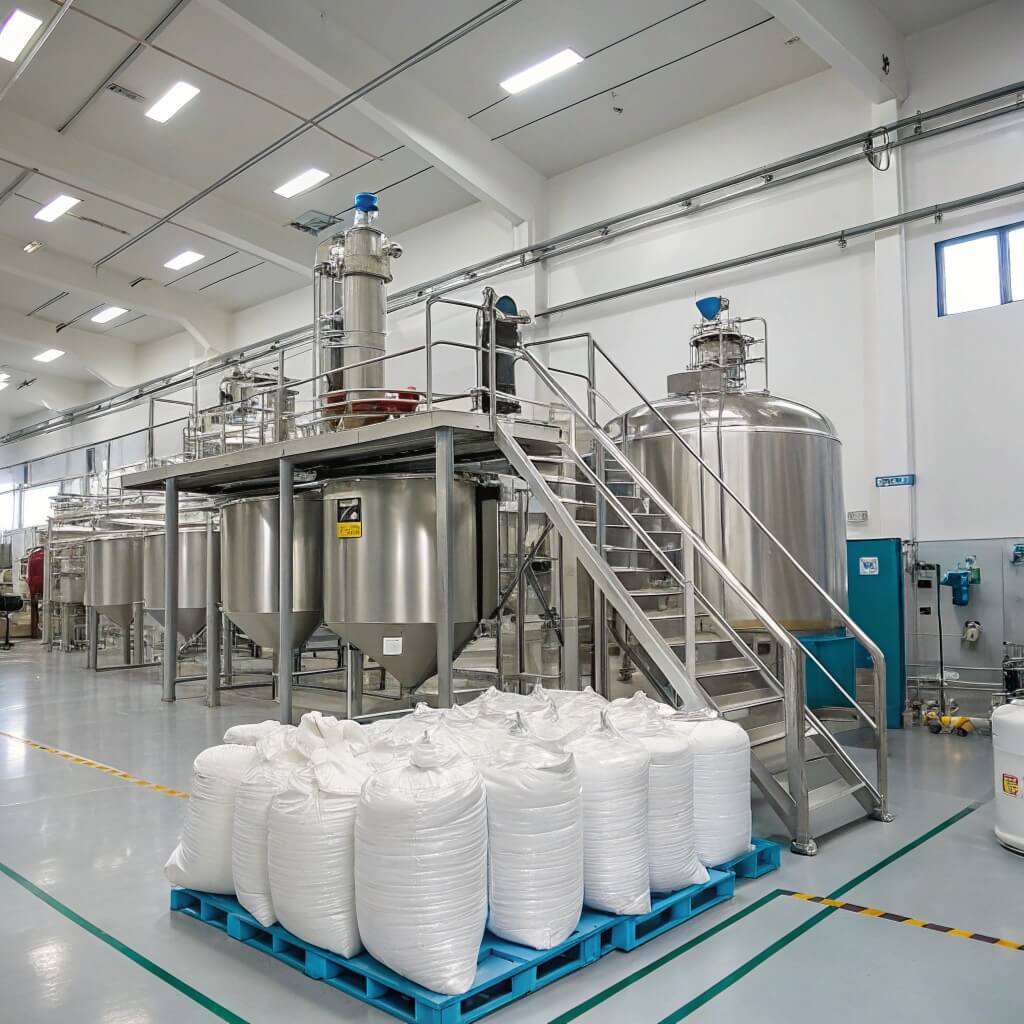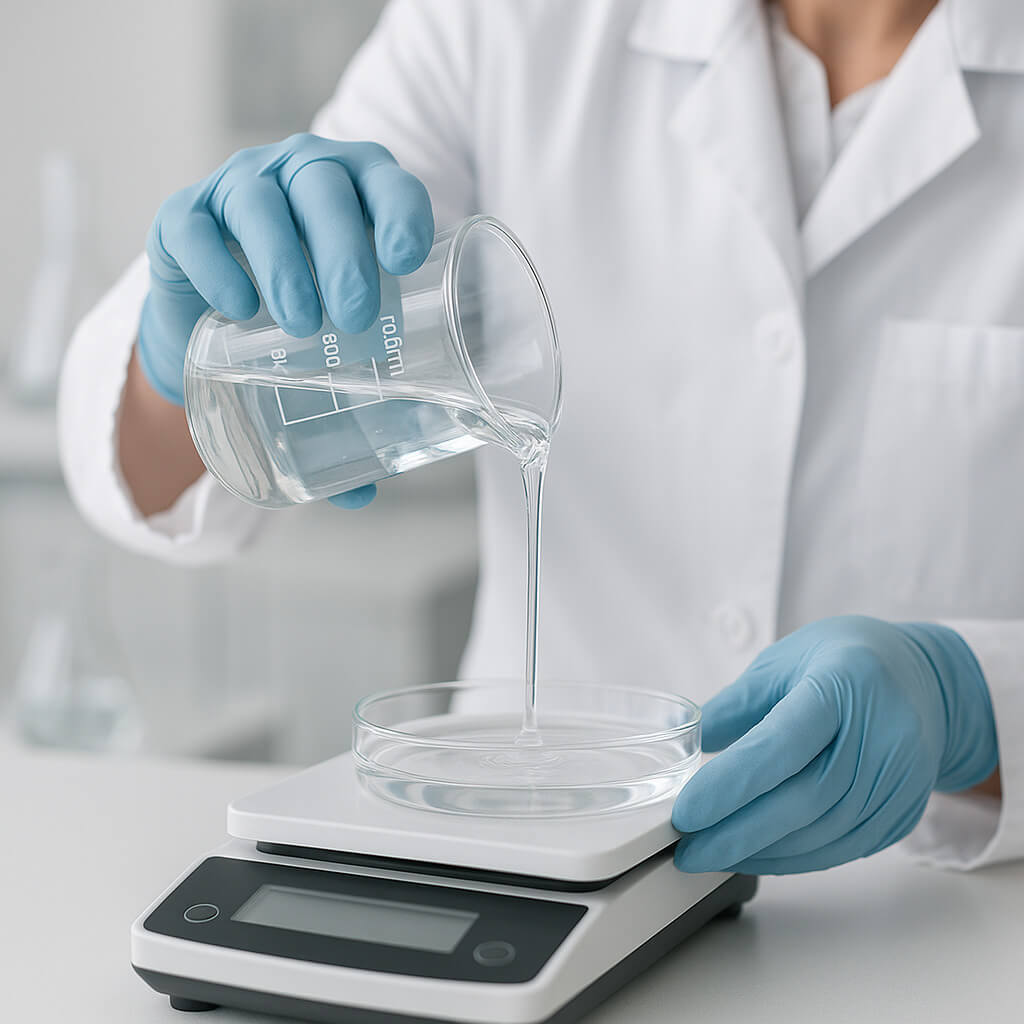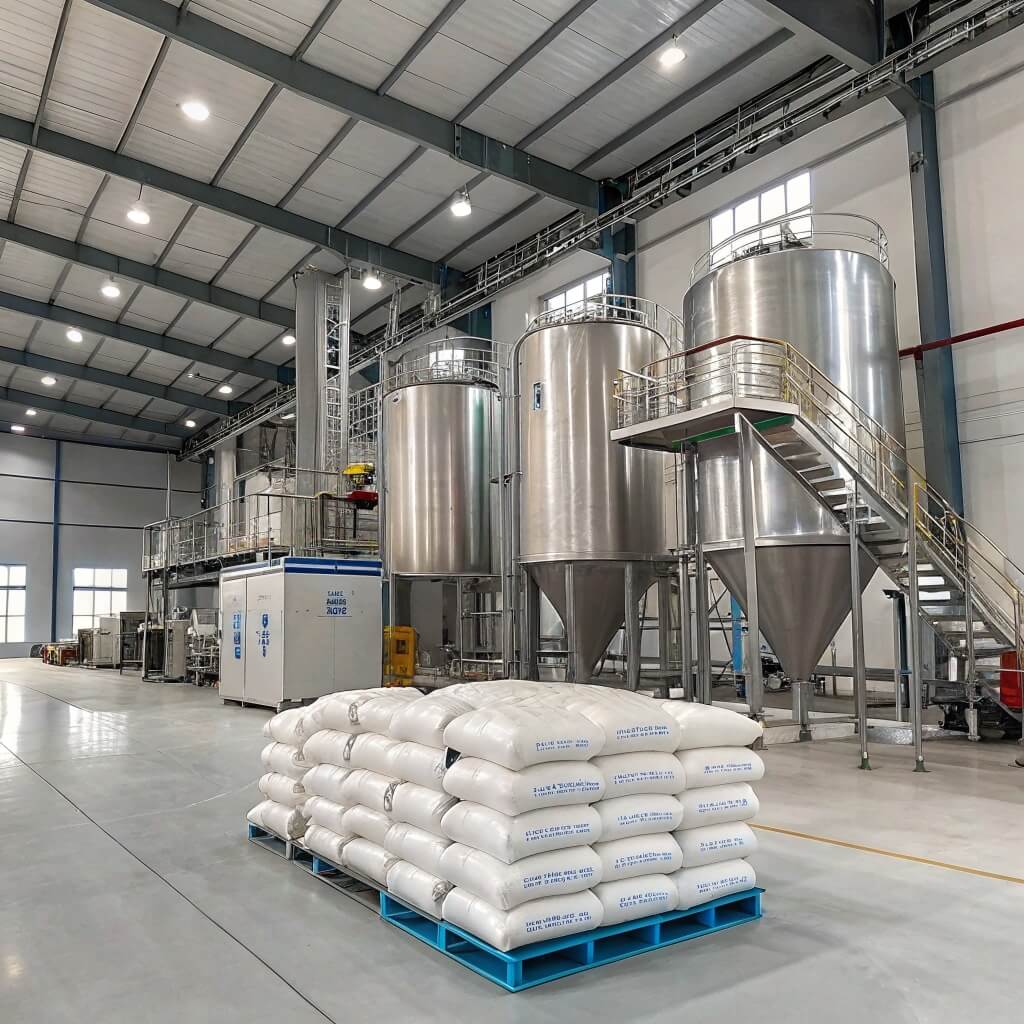Understanding the variations in HPMC grades can be crucial for achieving the desired results in various industries such as construction, pharmaceuticals, and food. The different grades of HPMC, specifically the 3 cps, 5 cps, and 6 cps, are used for different applications based on their viscosity and specific properties. In this article, we will explore what these differences are and how they impact product performance in various sectors.

1. What is HPMC and Why is Viscosity Important?
Hydroxypropyl Methylcellulose (HPMC) is a non-ionic, water-soluble polymer derived from cellulose. It plays a key role in multiple industries, providing thickening, binding, and stabilizing properties. In construction, it enhances the workability of cement-based products like tile adhesives and mortars. In pharmaceuticals, it helps control the release of active ingredients in drug formulations, and in food, it stabilizes emulsions and improves texture.
But what exactly is viscosity, and why does it matter? Viscosity is a measure of a fluid’s resistance to flow. For HPMC, this property is vital because it directly impacts how the material behaves in a given formulation. Higher viscosity HPMC will form a thicker, more gel-like structure, which is useful for improving the consistency and workability of products. Lower viscosity HPMC provides smoother textures and faster dissolution, which may be necessary in other applications.
For instance, in tile adhesives, a high viscosity ensures that the adhesive stays in place and does not drip, while in pharmaceuticals, a low viscosity is preferred for faster drug release. The ability to choose the correct viscosity grade ensures that HPMC meets the specific demands of different industries and applications.
| Property | Use in Construction | Use in Pharmaceuticals | Use in Food Industry |
|---|---|---|---|
| Viscosity | Enhances workability | Controls drug release | Improves texture |
| Water Retention | Ensures proper setting | Regulates dissolution | Maintains product stability |
| Gel Formation | Thickens mortar | Sustained release | Stabilizes emulsions |
2. What Does “CPS” Mean in HPMC Grades?
The term “CPS” stands for Centipoise, which is a unit of measurement for viscosity. It is commonly used to denote the thickness of a fluid or solution. In the case of HPMC, CPS values are used to specify the viscosity of different grades. HPMC grades such as 3 cps, 5 cps, and 6 cps indicate different levels of viscosity, with 3 cps being the least viscous and 6 cps being the most viscous.
Why does this matter? Simply put, CPS determines how the HPMC behaves in a solution or mixture. Higher CPS values mean thicker solutions, while lower CPS values lead to smoother, less viscous solutions. This direct correlation between CPS and viscosity makes it easier for industries to select the right grade of HPMC based on their specific requirements.
For example, when creating a thicker adhesive, a higher CPS HPMC would be more appropriate. However, in applications where a thinner, more fluid consistency is needed, such as in pharmaceutical syrups or certain food products, a lower CPS grade is preferable.
| Grade of HPMC | CPS Value | Application Example |
|---|---|---|
| HPMC 3 cps | 3 | Pharmaceutical syrups, food applications |
| HPMC 5 cps | 5 | Construction adhesives, tile grouts |
| HPMC 6 cps | 6 | Mortars, cement products |
3. How Do HPMC 3 cps, 5 cps, and 6 cps Differ in Viscosity?
HPMC grades such as 3 cps, 5 cps, and 6 cps differ primarily in their viscosity, which affects their behavior in various formulations. The key difference lies in how thick or thin the solution becomes once the HPMC is dissolved in water or another solvent.
HPMC 3 cps has the lowest viscosity among the three grades, making it ideal for applications where a smooth, quick-dissolving solution is necessary. It’s often used in pharmaceutical syrups and food products that require a thin, easily spreadable consistency. HPMC 5 cps, with moderate viscosity, is commonly found in construction adhesives and tile grouts, where a thicker consistency is needed but without the extremely high viscosity of HPMC 6 cps. HPMC 6 cps, with the highest viscosity, is ideal for products like mortar, where high thickness and gel formation are essential.
The differences in viscosity are not just theoretical; they have real-world applications. For instance, in the pharmaceutical industry, HPMC 3 cps is used for rapid disintegration in tablet formulations, while HPMC 5 cps is used in controlled-release formulations. In construction, HPMC 6 cps ensures that the cement mixture has a slow, controlled setting time, which is crucial for application.
| Grade | Viscosity (CPS) | Common Applications | Ideal Use |
|---|---|---|---|
| HPMC 3 cps | 3 | Pharmaceuticals, food | Quick dissolution |
| HPMC 5 cps | 5 | Tile adhesives, grouts | Moderate viscosity |
| HPMC 6 cps | 6 | Mortars, cements | High viscosity, slow setting |
4. How Do HPMC Grades Impact the Performance in Construction?
In construction, the viscosity of HPMC can significantly affect product performance. For example, HPMC 6 cps is typically used in tile adhesives, mortars, and cement-based products due to its ability to provide excellent water retention, improve workability, and enhance adhesion. This high viscosity ensures that the adhesive remains stable and easy to apply, without being too runny or hard to work with.
On the other hand, HPMC 3 cps is less commonly used in construction but may still be found in specific formulations requiring faster dissolution or lighter consistency. HPMC 5 cps strikes a balance between the two extremes, providing adequate viscosity for a variety of applications like grout and joint compound.
The selection of the right HPMC grade can have a significant impact on the final product’s performance. Using the wrong viscosity grade can lead to issues such as poor bonding, uneven texture, or difficulties during application. Therefore, choosing the appropriate HPMC grade based on viscosity ensures that the construction material performs as expected.
| HPMC Grade | Use in Construction | Viscosity Characteristics | Performance Impact |
|---|---|---|---|
| HPMC 3 cps | Rarely used | Low viscosity | Quick dissolution |
| HPMC 5 cps | Common in adhesives | Moderate viscosity | Balanced texture |
| HPMC 6 cps | Widely used | High viscosity | Strong bonding, slow setting |
5. How Does HPMC Viscosity Affect Pharmaceutical Formulations?
In pharmaceuticals, the viscosity of HPMC plays a crucial role in controlling the release rate of active ingredients in tablets and capsules. HPMC 3 cps, with its low viscosity, is typically used for immediate-release formulations. The lower viscosity ensures that the active ingredients are quickly released into the bloodstream for fast-acting relief.
In contrast, HPMC 5 cps and 6 cps, which offer higher viscosity, are used in controlled-release formulations. These grades provide a gel-like consistency that allows for the gradual release of the drug over time, ensuring a sustained therapeutic effect. This makes them ideal for formulations where prolonged drug release is required, such as pain management tablets.
Thus, the viscosity of HPMC directly influences how drugs are absorbed into the body, making it a critical component in pharmaceutical product development. Ensuring the right viscosity is selected is essential for achieving the desired therapeutic outcome.
| Grade | Viscosity (CPS) | Use in Pharmaceuticals | Effect on Drug Release |
|---|---|---|---|
| HPMC 3 cps | 3 | Immediate-release tablets | Fast dissolution |
| HPMC 5 cps | 5 | Controlled-release tablets | Sustained release |
| HPMC 6 cps | 6 | Extended-release tablets | Prolonged absorption |
6. How Do Food Applications Benefit from Different HPMC Viscosities?
HPMC is widely used in the food industry due to its ability to modify viscosity, create smooth textures, and stabilize emulsions. The viscosity of HPMC directly influences the final texture and mouthfeel of food products. For example, HPMC 3 cps is used in low-viscosity applications like beverages, where a smooth, thin texture is required. This grade helps to stabilize the liquid without altering its consistency too much.
HPMC 5 cps is often used in food products like sauces, dressings, and soups, where a thicker consistency is desired. It provides the necessary viscosity to improve texture while ensuring that the product remains pourable. HPMC 6 cps, with its high viscosity, is used in products that require a gel-like consistency, such as puddings, jellies, and gummy candies.
Selecting the right viscosity for food applications is essential for product quality. The right grade ensures that the texture remains stable and appealing to consumers, while also meeting the functional requirements of the product.
| Grade | Viscosity (CPS) | Use in Food Industry | Effect on Texture |
|---|---|---|---|
| HPMC 3 cps | 3 | Beverages, light foods | Smooth, thin texture |
| HPMC 5 cps | 5 | Sauces, dressings | Thicker consistency |
| HPMC 6 cps | 6 | Jellies, puddings | Gel-like consistency |
7. Why is the Selection of HPMC Grade Critical in Industrial Use?
The right selection of HPMC grade is critical because it directly affects the performance of the final product. For example, in construction, choosing the correct viscosity ensures that the adhesive remains workable and effective. In pharmaceuticals, the grade determines the rate at which drugs are released into the body. In food, the right viscosity ensures that the product has the desired texture and stability.
Choosing the wrong grade of HPMC can lead to problems such as poor consistency, unstable emulsions, or insufficient drug release rates. Therefore, understanding the viscosity requirements for a specific application and selecting the appropriate grade ensures that the final product performs optimally and meets industry standards.
| Industry | Correct HPMC Grade Selection | Key Factors to Consider |
|---|---|---|
| Construction | HPMC 5 cps or 6 cps | Viscosity, application time |
| Pharmaceuticals | HPMC 3 cps or 5 cps | Drug release rate, tablet size |
| Food Industry | HPMC 3 cps or 5 cps | Texture, shelf stability |
8. How Can HPMC Be Customized for Specific Needs?
Customizing HPMC involves adjusting its viscosity and hydroxypropyl content to suit the needs of specific applications. For example, the viscosity of HPMC can be tailored by adjusting the molecular weight, while the hydroxypropyl content can be adjusted to enhance solubility or gel formation. Customization allows manufacturers to achieve specific product properties, such as controlled release in pharmaceuticals or thickening in food products.
Customization is key in industries where precision is required, such as pharmaceuticals, where drug release rates must be controlled with high accuracy. By tweaking HPMC formulations, manufacturers can create products that meet the exact requirements for their specific applications.
| Customization Factor | Effect on Product | Application |
|---|---|---|
| Viscosity | Thicker or thinner consistency | Pharmaceuticals, Food |
| Hydroxypropyl Content | Improved solubility and gel strength | Construction, Food |
9. What Are the Testing Methods to Measure HPMC Viscosity?
There are several methods used to measure HPMC viscosity, which are crucial for ensuring the consistency and quality of products. Rheological tests are commonly employed to measure viscosity, where the flow properties of HPMC solutions are analyzed under different conditions. These tests help determine the ideal viscosity range for a specific application.
Another common method is gel permeation chromatography (GPC), which measures the molecular weight distribution of HPMC, indirectly providing insight into its viscosity. These methods ensure that the HPMC meets the desired specifications for performance.
| Testing Method | Purpose | Benefits |
|---|---|---|
| Rheological Testing | Measure viscosity | Determines flow properties |
| GPC | Measure molecular weight | Provides viscosity insights |
10. How Can You Optimize HPMC Formulations for Your Industry?
Optimizing HPMC formulations involves choosing the right grade, adjusting viscosity, and customizing hydroxypropyl content to meet specific needs. For example, in the pharmaceutical industry, you would select a higher viscosity grade for sustained-release tablets. In construction, a lower viscosity might be more appropriate for certain adhesives. Food manufacturers, on the other hand, may focus on achieving the perfect texture by adjusting viscosity levels.
Ensuring the right HPMC grade is selected is crucial for product performance. Whether you are working with adhesives, pharmaceuticals, or food, optimizing HPMC formulations ensures that your product delivers the desired results.
| Industry | Key Optimization Focus | Optimal HPMC Grade |
|---|---|---|
| Pharmaceuticals | Drug release control | HPMC 3 cps or 5 cps |
| Construction | Adhesion and workability | HPMC 5 cps or 6 cps |
| Food Industry | Texture and stability | HPMC 3 cps or 5 cps |
FAQ Section
Q1: What is HPMC?
Answer: Hydroxypropyl Methylcellulose (HPMC) is a cellulose-based polymer used for its thickening, binding, and stabilizing properties across various industries, including construction, pharmaceuticals, and food processing.
Q2: How does viscosity affect the performance of HPMC?
Answer: Viscosity determines the thickness and consistency of HPMC solutions, affecting how it performs in formulations. Higher viscosity provides thicker, more gel-like structures, while lower viscosity results in smoother, more fluid solutions.
Q3: What is the difference between HPMC 3 cps, 5 cps, and 6 cps?
Answer: The primary difference lies in viscosity. HPMC 3 cps has the lowest viscosity, HPMC 5 cps offers moderate viscosity, and HPMC 6 cps provides the highest viscosity. Each grade is suited for different applications based on required thickness and consistency.
Q4: How do I select the right HPMC grade for my application?
Answer: Select the appropriate grade based on the viscosity required for your application. Higher viscosity is ideal for adhesives and construction materials, while lower viscosity is preferred for pharmaceutical syrups and certain food products.
Q5: What tests are used to measure HPMC viscosity?
Answer: Common viscosity tests include rheological tests, which measure the flow properties of HPMC solutions, and gel permeation chromatography (GPC), which assesses the molecular weight distribution and indirectly provides viscosity information.




